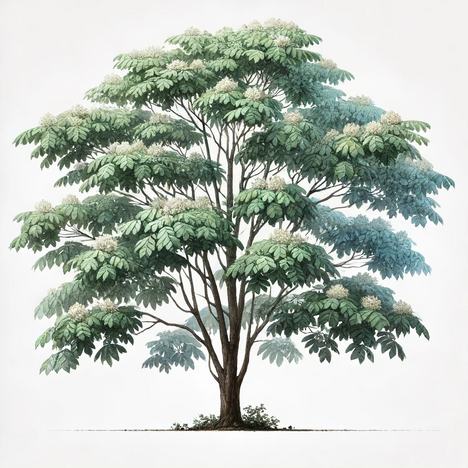Antler tree

The nature of the antler tree
The antler tree, with its distinctive foliage and woody structure, can be found in many gardens and parks around the world. Despite its popularity in landscaping, knowledge of its effects on pets, particularly dogs, is not widespread. This article aims to shed some light and unlock the secrets of the antler tree.
Components of the antler tree: a chemical analysis
The antler tree contains a number of chemical compounds that make it useful for its many applications. These include essential oils, thujones, phenols and various types of flavonoids. While some of these compounds are valued in medicine and cosmetics, they can have varying degrees of effectiveness for dogs.
Essential oils and thujones
Essential oils are known for their antiseptic and anti-inflammatory properties. However, thujone, a chemical compound found in many plants, can be toxic to dogs. A high concentration of thujones in the antler tree can cause symptoms such as vomiting, diarrhea and, in severe cases, neurological problems in dogs.
Phenols and flavonoids
Phenols also have antiseptic properties, while flavonoids can act as antioxidants. Although these compounds may provide health benefits in moderate amounts, their effect on dogs is largely unknown and could be potentially harmful.
Risks and safety: Is the antler tree toxic to dogs?
The question of whether antler tree is toxic to dogs depends on several factors, including the amount ingested and the dog's individual sensitivity. In general, consumption of antler tree plant parts by dogs should be avoided to minimize the risk of poisoning and health complications.
Prevention and measures: Protecting your dog
As a dog owner, it is important to take proactive measures to protect your dog from potential dangers from the antler tree. This includes restricting access to areas where the tree is growing and keeping an eye on your dog when out walking. If your dog does consume any part of the tree, it is advisable to consult a vet immediately.
A double-sided sword
The antler tree is a fascinating plant with many useful properties for humans. For our dogs, however, it harbors potential risks that should not be underestimated. Through vigilance and caution, we can provide our dogs with a safe and healthy environment where the beauty of nature holds no hidden dangers. Ultimately, it is our responsibility to ensure that our four-legged friends are protected from the lesser-known risks that certain plants such as the antler tree can pose.
If you notice any signs of hypersensitivity or poisoning in your dog, you should see your vet immediately. We are not a substitute for a vet, but we try to be as accurate as possible. Every dog reacts differently and we recommend you get a second opinion or consult your vet if in doubt.
Stay healthy and take good care of your four-legged friend!😊